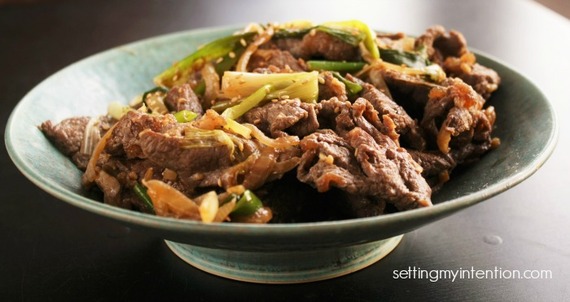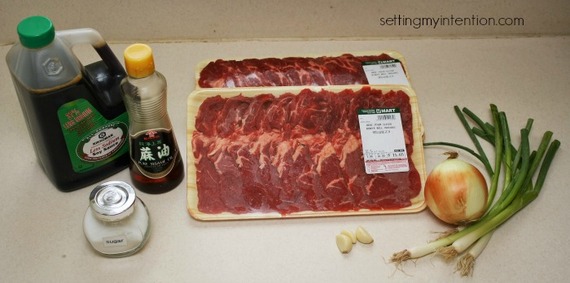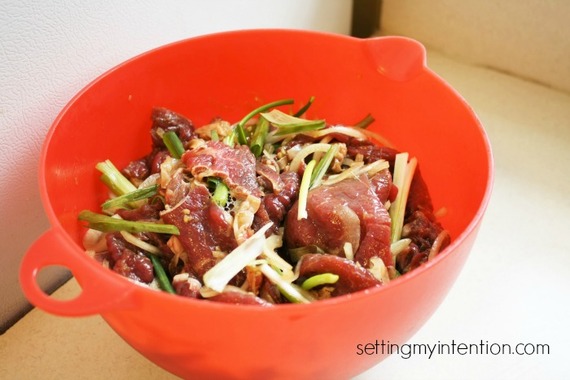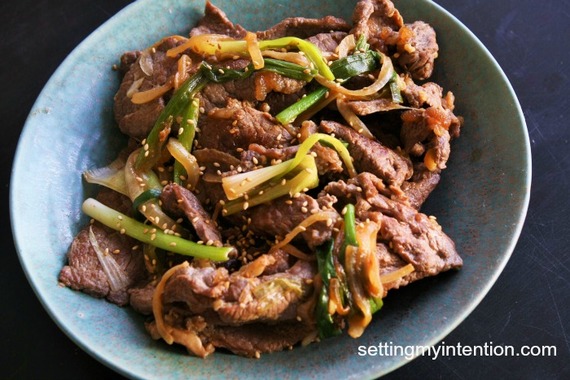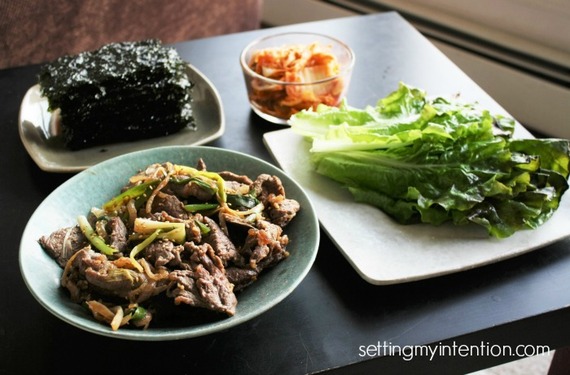 Bibimbap is one of the best-known Korean dishes. According to chef Deuki Hong and writer Matt Rodbard, there really isn't a definitive recipe. "The name translates to 'mixed rice,' and, in practice, rice is the dish's only constant," the authors write in their new cookbook, Koreatown.
Bibimbap is one of the best-known Korean dishes. According to chef Deuki Hong and writer Matt Rodbard, there really isn't a definitive recipe. "The name translates to 'mixed rice,' and, in practice, rice is the dish's only constant," the authors write in their new cookbook, Koreatown.
Korean food is built on bold flavors: spicy pickled vegetables, sweet, smoky meats and pungent, salty stews. That can be a little intimidating for some American diners. But the authors of a new book called Koreatown hope to change that.
Deuki Hong and Matt Rodbard spent two years eating in Koreatowns, from Los Angeles to Atlanta to New York. Restaurants like Cho Dang Gol, a little place in Manhattan that's known for its stews and house-made tofu, where we met for lunch. Rodbard ordered a bowl of kalbijjim — a short-rib stew that's savory and sweet with a fiery kick. Hong says it's a perfect example of Koreans cooking for Koreans.
"When we build restaurants, it's for us. Because we miss home flavors, we miss the motherland," says Hong. "It's not like, 'Hey, let's invite this critic in here, or this person.' It's not like we don't care about you guys. It's just not our focus. And, yeah, we don't really care."
That's great if you want Korean-Americans to eat at your restaurant. But it's not so good if you're trying to pull in large numbers of non-Korean diners, too.
Along with recipes, Koreatown features interviews, essays and original photos from Korean restaurants across the country.
"It's really a 'for us, by us' mentality at a lot of restaurants," says Rodbard. "You walk in, English is very limited, sometimes nonexistent. The cuisine just has not caught up with Thai or Japanese or even regional Chinese" in terms of popularity.
This is where Rodbard and Hong think their book can help. Rodbard is a food writer in Brooklyn. Hong is a 26-year-old Korean-American chef who's worked in the kitchen at two acclaimed New York City restaurants, Momofuku and Jean-Georges. Now he runs his own well-regarded restaurant, Kang Ho Dong Baekjong, in New York's Koreatown.
But Koreatown is no mere celebrity cookbook. Along with recipes, it features interviews, essays and original photos from Korean restaurants across the country. From the biggest Koreatown, in Los Angeles — said by some to have better Korean food than Seoul — to America's fastest-growing K-town, in Atlanta, to its most dense and competitive, on 32nd Street in Manhattan, where, as Hong puts it, "you'll see a [Korean] barbecue restaurant, right next to a barbecue restaurant, right across from a barbecue restaurant."
Their cookbook does cover Korean barbecue, and other staples like kimchi and bibimbap. But Rodbard and Hong intentionally focused more on soups and stews, which they call the heart of Korean cooking — dishes like seoulleongtang, a beef bone broth that simmers for hours.
"It's super milky, creamy, and you get some of that oxtail," says Hong. "That's, like, what Koreans eat. It's not like a pretty, fancy or flashy dish that you introduce to your American friends."
In their cookbook, Rodbard and Hong intentionally focused more on soups and stews, which they call the heart of Korean cooking. Above, a bowl of kongguksu, a cold soup traditionally served in the summertime and made with soy milk, thin somen wheat noodles and pine nuts.
Hong and Rodbard tested recipes for seoulleongtang and dozens of other dishes at Hong's walk-up apartment in Manhattan. They demonstrate one of those recipes:doenjang jigae, a stew with brisket and clams. The key ingredient is a fermented bean paste that's like a funkier cousin of Japanese miso. Exactly how much you add is a matter of personal taste. As Rodbard explains, there's a concept in Korean cooking called son mat — literally "taste by hand."
"It's using your hands, and using your taste to cook with," Rodbard says. "So it's difficult to sometimes put a number on a lot of this cooking."
That made it hard when it came time to write down fixed amounts of ingredients for the recipes in the cookbook. In the end, Hong says, they were steered by their taste buds.
"We were always about what's so special about this dish. It's that texture, it's that flavor," Hong says. The result may not be the most traditional cookbook. But it might help you find your new favorite spot in Koreatown.
bySam Horine/Courtesy of Clarkson Potter



